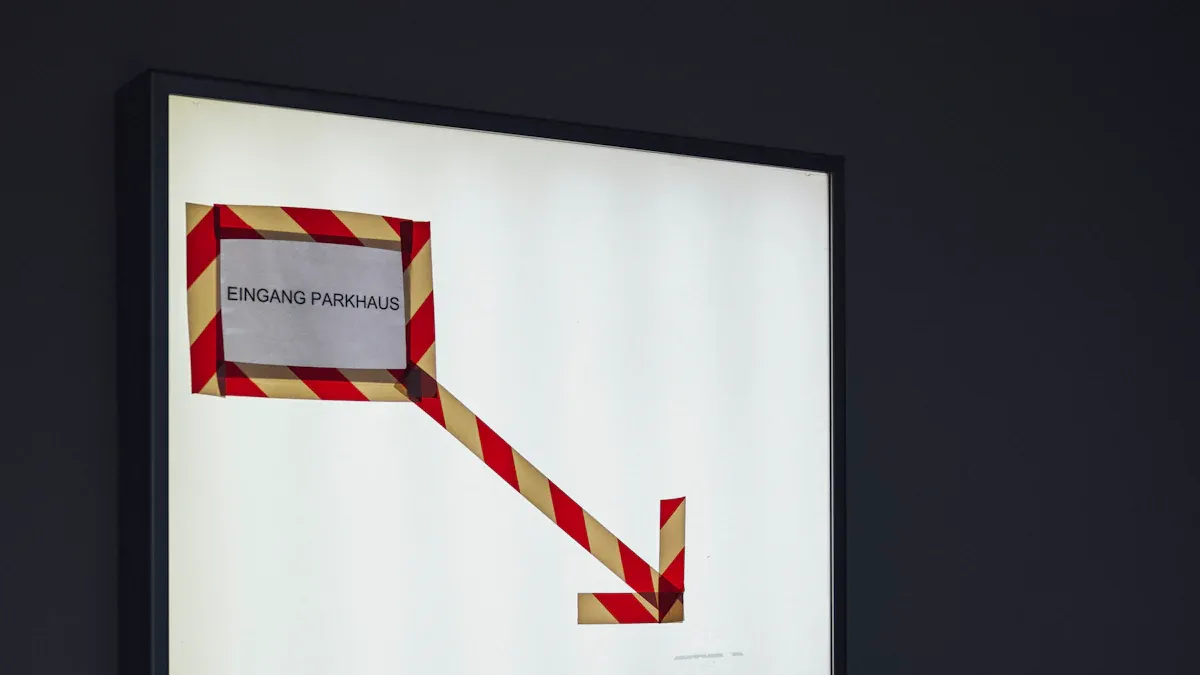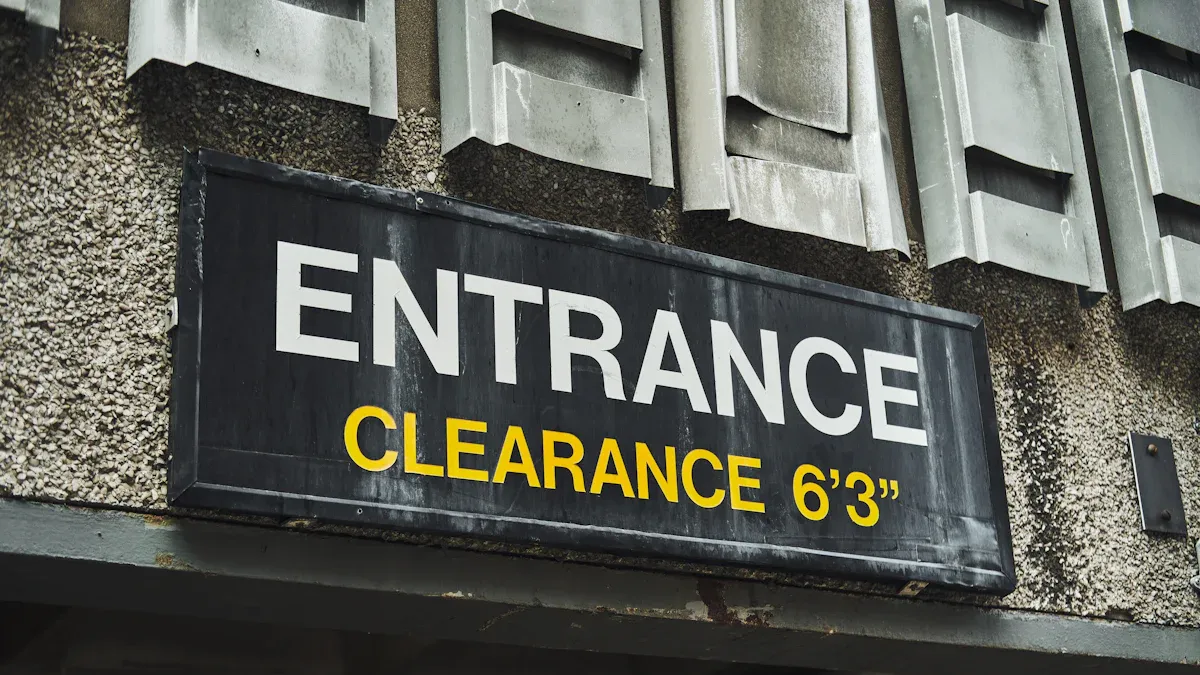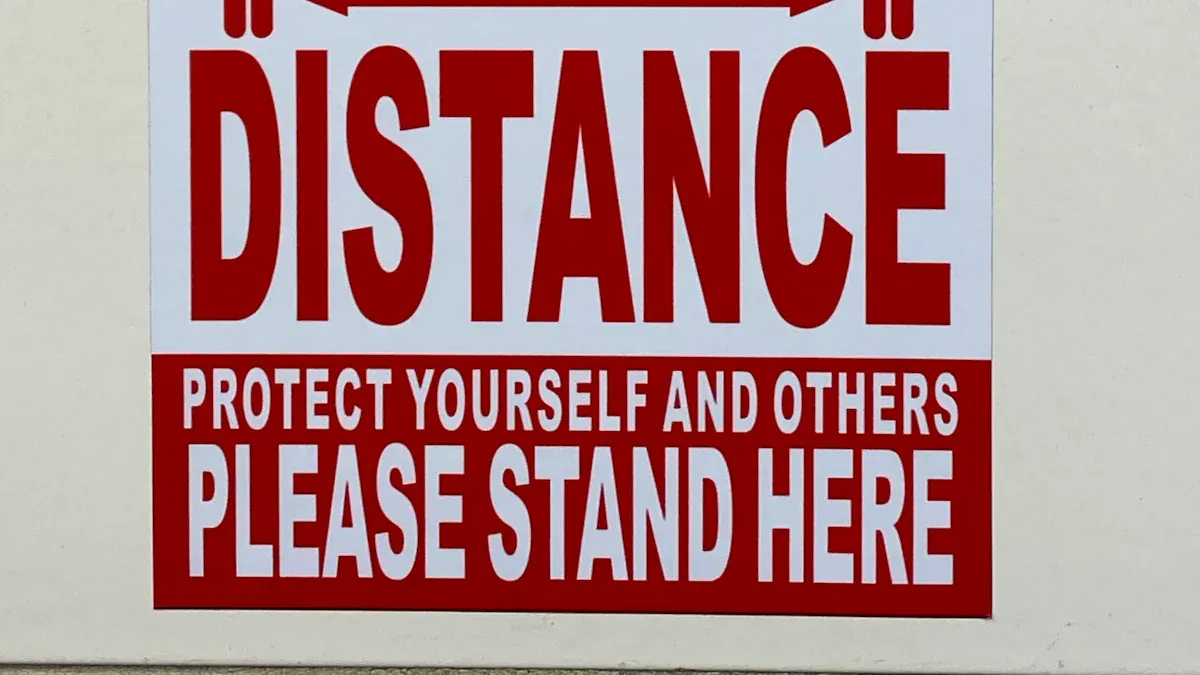How to Install Wall Mounted Signage Holders for Professional Displays

When you Install Wall Mounted Signage, it’s more than just hanging something. It gives people their first impression. If it’s done poorly, it might look bad or even fall. But if it’s done right, it looks great and lasts longer.
Why guess how to do it? Using clear steps helps you Install Wall Mounted Signage effectively. You’ll save time, avoid errors, and create a display that looks amazing.
Taking some time to prepare makes everything look much better.
Key Takeaways
Use the correct tools to install. A drill, level, and stud finder help make it safe and neat.
Pick strong materials that last long. Weatherproof and tough holders keep your signs safe and looking good.
Measure and mark spots before drilling. Careful measuring stops mistakes and keeps signs straight.
Check if your sign is stable after putting it up. Push or pull gently to see if it’s secure. Fix it if needed.
Don’t skip steps like measuring or use wrong tools. Work slowly to make sure it’s done right.
Tools and Materials for Installation

Installing wall-mounted signage holders is easier with the right tools. Good tools help your display look neat and stay secure. Here’s what you’ll need to begin.
Must-Have Tools for Mounting Signage Holders
Get these tools ready before starting. They make the job faster and safer:
Power drill and drill bits: Use a power drill to make holes in the wall. Pick drill bits that match your wall type, like drywall, wood, or concrete.
Screwdrivers: These are needed to tighten screws and attach the signage holder.
Level: A level helps keep your signage straight. Crooked signs look unprofessional.
Stud finder: On drywall, use a stud finder to locate wooden studs for better support.
Ladder: A sturdy ladder helps you safely reach higher spots.
Safety equipment: Wear gloves and goggles to protect yourself while working.
Pro Tip: Check your tools before starting. Working tools save time and prevent delays.
Important Materials for Digital Signage Installation
Picking the right materials is just as important as having good tools. Here’s what you’ll need for a strong and clean installation:
Mounting hardware: Includes screws, brackets, and wall anchors. Choose based on your signage’s weight and type.
Cable management supplies: Use clips or covers to hide wires neatly. This makes your display look better.
Weatherproof materials: For outdoor signs, pick items with weatherproof ratings like IP56 to handle rain and dust.
Durable enclosures: Protect your signage with tempered glass or metal cases. These keep it safe from damage or vandalism.
Feature | Specification/Requirement |
|---|---|
Weatherproofing | IP56 or higher for rain and dust protection |
Brightness | 2,500+ nits for clear viewing in sunlight |
Temperature Resistance | Works between -30°F to 120°F (-34°C to 49°C) |
Vandal Resistance | Metal cases, tempered glass, locking systems |
Note: Spending more on quality materials now saves money later. Durable materials keep your signage looking great for years.
Extra Accessories for Better Results
Want to make your installation even easier? Try these optional tools:
Laser level: Projects a straight line on the wall for perfect alignment.
Measuring tape: A good measuring tape helps you place signage accurately.
Cable concealers: Hide wires completely for a clean, polished look.
Adhesive strips: For lighter signs, strong adhesive strips work without screws.
These extras can save time and help you create a flawless display.
With the right tools, materials, and optional extras, your digital signage installation will be smooth and professional. Take time to prepare everything before you start.
Getting Ready to Install
Before drilling or hanging, take time to plan well. Good preparation makes your signage look neat and stay secure. Follow these simple steps.
Checking the Wall Type and Material
Walls are not all the same! The kind of wall you have decides what tools and hardware you’ll need.
Drywall: Light and common in homes or offices. Use wall anchors for better support.
Concrete or brick: Hard to drill but very strong. Use masonry drill bits and sturdy anchors.
Wood: Simple to work with. Screws can go straight in without anchors.
Tip: Knock on the wall lightly. A hollow sound means drywall. A solid sound means concrete or wood.
Knowing your wall type helps you avoid mistakes and keeps your signage secure.
Measuring and Marking the Right Spot
Take a measuring tape and pencil to mark the best place! First, decide how high and where your signage will go.
Measure your signage holder’s size.
Mark the center spot on the wall for the holder.
Use a level to draw straight lines as a guide.
Pro Tip: Step back and look at your markings from far away. This helps you see how the signage will look when finished.
Good measurements save you from fixing mistakes later.
Making Sure Everything is Straight
Straight signs look professional. Even a small tilt can ruin the look.
Use a level or laser level to check your lines.
If using more than one holder, measure the space between them for balance.
Ask a friend to hold the signage while you step back and check.
A straight display looks great and shows you care about details.
These steps make sure your signage is ready for easy installation.
Step-by-Step Guide to Install Wall Mounted Signage

Putting up wall-mounted signage holders doesn’t have to be hard. Follow these steps to create a neat and strong display that lasts. Let’s get started!
Drilling Holes and Adding Wall Anchors
Drilling is key to a good installation. First, measure and mark the wall carefully. Use a tape measure and level to find the right spots.
Steps for drilling and adding anchors:
Mark the Spots: Use a pencil to mark where to drill. Check with a level to keep it straight.
Drill Holes: Pick the right drill bit for your wall. Use a regular bit for drywall or a masonry bit for brick. Pre-drilling stops damage to the wall and holder.
Add Wall Anchors: Push anchors into the holes. These help hold heavier signs securely.
Tip: For brick walls, use a bolster plate. It spreads weight evenly and keeps the sign steady.
Drilling and anchoring right makes your display strong and safe.
Attaching the Signage Holder with Screws or Adhesive
After the anchors are in, attach the signage holder. Use screws or adhesive depending on the sign’s weight.
Here’s how:
Place the Holder: Line up the holder with the anchors. Make sure it’s straight and centered.
Secure with Screws: Tighten screws into the anchors using a screwdriver. For heavy signs, use strong screws.
Use Adhesive for Light Signs: For lighter signs, apply strong adhesive strips evenly. This avoids uneven mounting.
Pro Tip: Test screws and brackets first. Many are designed to hold up to 500 pounds safely.
Attaching the holder properly keeps your sign secure and looking great.
Checking Stability and Making Adjustments
Before finishing, check if the sign is stable. A shaky or crooked sign can look bad and be unsafe.
Steps to test and fix:
Check Stability: Gently push or pull the sign. If it moves, tighten screws or adjust adhesive.
Confirm Alignment: Step back and look at the sign from different angles. Use a level to ensure it’s straight.
Fix Misalignment: If it’s crooked, loosen screws slightly and adjust the holder.
Note: Experts use careful alignment to make displays look perfect, like at Hankyu Umeda Station.
Testing and adjusting ensures your sign is secure and looks professional.
Tips for a Professional Finish
Making your signage look neat takes careful work. These tips will help you create a display that looks professional and stands out.
Keeping Signs Straight and Even
Straight and even signs look better and more professional. Crooked displays can distract people and weaken your message. Use tools like a digital level to make sure everything is aligned. These tools are easy to use and great for beginners.
Feature | Description |
|---|---|
Precision | Measures angles with high accuracy for perfect leveling. |
Digital Display | Shows clear data on a screen to help with alignment. |
Remote Measurement | USB connection lets one person handle leveling tasks easily. |
Accreditation | Checked by experts to ensure the tool is reliable. |
When putting up modular wall sign supports, step back and check how they look. Another person can help spot mistakes. If working alone, a laser level can project a straight line to guide you.
Tip: Always check your leveling tools before starting. This ensures they work correctly and saves time fixing errors.
Picking the Right Hardware for Your Wall
Using the right hardware for your wall is very important. Different walls need different tools, and using the wrong ones can cause problems. Here’s a quick guide:
Mount Type | Description | Suitable For |
|---|---|---|
Wall Mounts | Easy to use and come in fixed or adjustable types. | Most indoor spaces |
Ceiling Mounts | Good for areas where walls can’t be used. | Open spaces or glass walls |
Freestanding Mounts | Can be moved around for flexible placement. | Stores and events |
Video Wall Mounts | Helps align multiple screens perfectly. | Large displays |
Kiosk Mounts | Built for touchscreens and interactive signs. | Information centers and self-service areas |
For drywall, use anchors to hold heavier signs. For concrete walls, use strong screws and special drill bits. Many modular sign kits include hardware made for specific wall types, making things easier.
Note: Not sure about your wall type? Test a small spot or ask an expert before drilling.
Avoiding Common Installation Errors
Mistakes during setup can make signs look bad or even fall. Avoid these common errors:
Skipping Measurements: Always measure and mark spots before drilling. Guessing often leads to uneven signs.
Using Wrong Tools: Match tools to your wall. For example, use masonry bits for brick walls.
Overtightening Screws: Tightening too much can crack holders or damage walls.
Ignoring Weight Limits: Check how much weight your hardware can hold to avoid accidents.
Take your time while installing. Rushing can cause mistakes that are hard to fix. For easy access acrylic poster holders, make sure they are level and firmly attached.
Pro Tip: After installation, gently push the sign to test its stability. Tighten screws or adjust if it wobbles.
By following these steps, your displays will look great and stay secure for a long time.
Putting up wall-mounted signage holders can be simple. Follow these steps to make sure your display is safe, straight, and looks great. Planning ahead is important—measuring, marking, and picking the right tools really help.
Check the wall type and material before starting.
Use tools like levels and stud finders to get it right.
After installing, test if it’s stable to prevent problems.
Fun fact: Traffic experts study car speeds and flow before placing radar signs. This helps them pick the best spots. Your signage needs the same careful planning!
Take your time, and you’ll have a neat display that lasts long.
FAQ
What tools do I need for signage installation?
You’ll need a power drill, level, screwdriver, and safety gear. A stud finder and ladder can also help. These tools make the installation process smoother and ensure your display stays secure.
Can I install digital signage displays on any wall?
Yes, but you need to check the wall type first. Drywall, concrete, and wood require different tools and hardware. Proper preparation ensures your signage stays in place and looks professional.
How do I make sure my signage is straight?
Use a level or laser level to align your display. Mark the wall with a pencil before drilling. Stepping back to check the alignment visually also helps.
What’s the best way to hide wires for a clean display?
Cable concealers or clips work great for hiding wires. They keep your display neat and professional. For outdoor installations, weatherproof cable covers are a good choice.
How do I test if my signage is secure?
Gently push or pull the display after installation. If it wobbles, tighten the screws or adjust the adhesive. A stable signage holder ensures safety and a polished look.
See Also
Comprehensive Instructions for Acrylic Signs in Light Boxes
Selecting the Ideal Acrylic LED Display for Business Signage
Creating Acrylic Light Box Signs to Boost Business Success
Crafting Striking Acrylic Displays for Light Boxes
Finding the Right Acrylic Holder for Your Illuminated Displays

